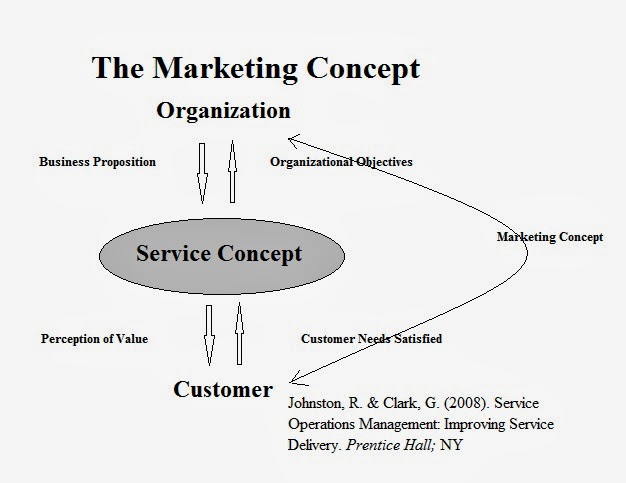The business proposition and the customer’s
perception of that proposition create the service concept. It is a mutual and
shared understanding taking into consideration both vantage points that blend
into a total picture. What the company is offering (business proposition) may
be perceived differently than what the customer experiences (customer
perception of service). The two perspectives create a true service concept.
As an example, a restaurant may offer a friendly
environment with high quality food at an affordable price. The customer
frequents the restaurant and experiences rudeness by the staff with mediocre
quality food at an affordable price. The business proposition and customer
perception do not match and this leads to dissatisfaction and lost future
business.
Perhaps there were some recent changes in the
business? Due to slow sales and lackluster profits the restaurant decided to
reduce dish quality and keep the price at previous levels. They have also cut
back on training and are pushing their workers harder in an effort to return to
profitability. They have unintentionally changed the nature of their business and
may need to rethink their strategy and business propositions if they continue
to lose customers.
Before one can truly rethink their business
offerings it is necessary to delve into the nature of what they are truly offering
customers within the market and how to improve upon those offerings. For
example, the atmosphere may be more important than the quality. Likewise, the
way the food is prepared and displayed may be more important to customer
perception than the actual quality.
Understanding precisely what your customers want is
important for maintaining a stronger shared concept of your business. Value
propositions are not simply a list of benefits but THE few reasons why
customers would choose your business over any competitor. Collaborating with
industry stakeholders can help in finding more value in the business’s main business
propositions (Anderson, et. al. 2006).
The service concept is simply just a mental picture
of what the organization is offering. It
can be defined in a dictionary as “an idea of something formed by
mentally combining all its characteristics or particulars”(1).
This means that both the customer perception and business proposition are
subjective by nature and are enhanced through adjusting the strategies and
offerings to change the association of images (concept).
Business propositions are enhanced by aligning
organizational resources to root value that is in turn sold on the market. It
is beneficial to work with industry stakeholders to find more value in the
businesses main propositions (Anderson, et. al. 2006). Listening and understanding customers needs along
with the supply and development of serving those needs through value
proposition enhancement is important for capitalizing on the service concept.
One an organization understands their true value
propositions they can work on developing their marketing concept that runs as a
theme throughout their business and into the main marketing message (s). The
marketing concept can be described as a management philosophy that helps
organizations understand their own needs and the customer needs in the
achievement of their objectives (Johnston & Clark, 2008). Somewhere along
the line both the organization and the customer need to be drawn into this
shared concept.
The central message of any marketing campaign must
be in alignment with the service concept. If customers are expecting something
different than what is being offered they are likely to be dissatisfied. If
they experience something greater than what is expected they are likely to be
satisfied. This satisfaction or dissatisfaction has a huge impact on the
success of businesses and possibilities for future growth. Do you know what your business is truly
offering?
Tips:
-Define 2-3 propositions your business currently offers.
-Understand how your customer views your offerings
to create the service concept.
-Redefine your business propositions for maximum
value and revenue generation.
-Conduct a market analysis to determine if those 2-3
propositions have maximum value.
-Strategically align the organization to the new 2-3
propositions.
-Sell those new propositions through marketing.
-Review the performance of the organization.
-Review and adjust the propositions as necessary for
future growth.
Anderson, J. et. al. (2006). Customer value
propositions in business markets. Harvard
Business Review, 84 (3).
Johnston, R. & Clark, G. (2008). Service
Operations Management: Improving Service Delivery. Prentice Hall; NY

No comments:
Post a Comment